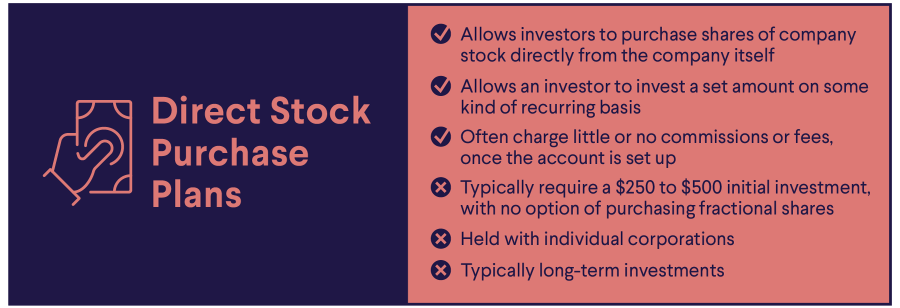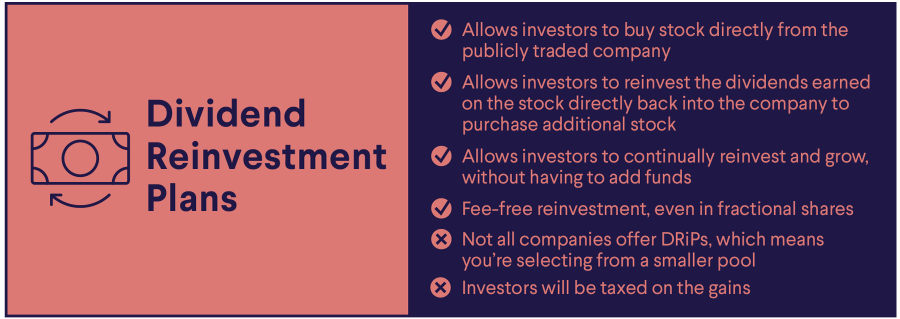What Happens to My Stock in a Merger?
It’s hard to know what to expect as an investor when mergers take place and you own stocks that are in the mix. Acquisitions often lead to a loss in value for the acquiring company’s shares, while the target company often sees a lift. But that’s not always the case, and there are certainly no guarantees.
Key Points
• Mergers and acquisitions often result in varied stock price movements, typically causing the acquiring company’s shares to decline while the target company’s shares appreciate.
• Regulatory approvals, stock volatility, and executive decisions can lead to the cancellation of M&A deals, creating investment uncertainty despite most deals ultimately succeeding.
• The market reaction to M&A announcements can vary, with several scenarios affecting share prices, such as investor perceptions of deal value and potential synergies.
• Employee stock options can be impacted significantly during mergers, with employees potentially seeing their shares cashed out or exchanged for new company shares.
• While mergers can offer growth opportunities and resource access, they also carry risks of failure and may not guarantee increased shareholder value.
What Are Mergers and Acquisitions (M&A)?
Mergers and acquisitions (M&A) are corporate transactions that involve two companies combining, or one buying a majority stake in another. This can involve private companies or public companies.
A CEO might embark on an M&A transaction with the objective of finding “synergies,” which is Wall Street lingo for creating value through consolidation. Synergies are typically found by reducing costs or finding new avenues for growth by combining two companies.
Stock-for-stock mergers — when the target’s shares are converted into the buyer’s shares — are the most common type of M&A transaction. That’s why there’s often a burst of M&A activity after a prolonged bull market: Companies with high stock prices can use their shares to make pricey purchases.
For instance, in early 2020, M&A activity experienced a slowdown as the repercussions of COVID-19 took hold of the global economy. Dealmaking during the pandemic eventually came back as share prices soared and executives sought opportunities to adjust to the new business environment.
Meanwhile, in an all-cash merger, the buyer either has to spend the cash they have on hand, or raise new capital to fund the purchase of the target.
What Is a Merger of Equals?
A true merger of equals (MOEs) is rare, so most mergers are actually acquisitions. But MOEs could signal to investors that two similar, roughly equal-sized companies are uniting because there are significant tax or cost savings to be had. Investors may find that with MOEs, the premiums paid aren’t as significant.
What Is Private Equity?
Private equity (PE) firms, alternative investment funds that buy and restructure companies, also participate in M&A. They seek deals when there’s “dry powder,” or funds that have been committed by investors but aren’t yet spent.
How Do Stocks Move During Mergers?
After an M&A announcement, the most common reaction on Wall Street is for the shares of the acquiring company to fall and those of the target company to rally. That’s because the buyer typically offers a premium for the takeover in order to win over shareholders, and big company moves or decisions are a key driver of price fluctuations and how stocks work.
The rally in the target’s stock can come as a surprise, often leaving investors with the dilemma of selling them, or holding onto them after the deal is complete. The target’s shares usually trade for less than the acquisition price until the transaction closes. This is because the market is pricing in the risk of the deal falling apart.
Why Do M&A Deals Fall Through?
Deals can and do fall apart for a number of reasons. For example, deals can get scrapped because of a key regulatory disapproval, stock volatility, or simply because the CEOs changed their minds.
That would mean the money spent on investment bankers, lawyers, and consultants to put together the M&A terms would have been effectively wasted, not to mention the specter of a costly break-up fee. As a result, there can be investor skepticism towards M&A.
Different Stock Reactions to M&A
Tracking movement in the stock market is a key way to gauge how shareholders and other investors feel about a deal. Here are some different scenarios of how the market could react and influence share prices:
Buyer (acquiring company) rises alongside target (company being acquired): This is typically the best case scenario for companies and investors. It occurs when the stock market believes the deal is a smart acquisition for the buyer and that the deal’s been made at a good price.
Buyer falls significantly: The buyer’s shares may plummet if investors believe executives are overpaying for a target or if they think the target isn’t a good purchase.
Target moves little: The target’s shares may see little change if rumors of a potential deal already sent share prices higher, causing the premium to be baked in. Alternatively, the premium being paid may be low, causing a muted market reaction.
Buyer rises, target falls: In rarer cases, a deal gets called off and the buyer’s shares rise while the target falls. This could be because investors have soured on the merger and believe that the acquiring company is getting out of a bad deal.
Target falls: If a target company needs money, a private equity firm could buy a stake at a discount. In such cases, the target company’s shares could slump.
Merger vs Acquisition Impacts on Stocks
Mergers and acquisitions are similar, and when it comes to the effect of each on stocks, the impact is generally felt in the same way, too. That is, for shareholders, there likely isn’t all that much of a difference in how a merger or an acquisition would affect the value of their shares.
The key difference mostly concerns the variance in values or sizes between the two companies. Mergers generally involve two roughly equal-sized or valued companies, meaning that the effect on share values may be rather muted.
Acquisitions tend to involve companies of different sizes or values, so you’re more likely to see a swing in share values, as discussed.
M&A Stock Impact Example
To see the effect of a merger or acquisition on a stock’s price, let’s look at a textbook example: The merger between Kraft and Heinz in 2015, which created one of the largest food companies in the world.
The two companies had multiple similarities, including their size and the industries in which they operated. And when the merger was originally announced, stock values soared. Kraft shares shot up more than 35% in March 2015 after the news hit the market.
The new company, the Kraft Heinz Company, became a single stock: Kraft Heinz Co., trading under the KHC ticker. While the stock did originally shoot way up in price, the following months saw its value taper off before rallying again and reaching a peak of nearly $100 per share in early 2017.
Since then, however, its value has fallen, and as of late 2024, is trading at around $30 per share.
How Is Employee Stock Impacted By a Merger?
Depending on the specifics, employee stock can be significantly affected by a merger. One of the most profound ways this can occur is that the new company might cancel or modify employee stock options.
But generally, if you are an employee in a company that is merging with another or being acquired, it’s likely that you will see your shares either cashed out, or exchanged for shares in the new company.
Do Mergers Create Value?
There’s long been a debate among investors and academics whether M&A actually creates value for stakeholders and shareholders. Recent research has shown that frequent acquirers do tend to add value, while bigger deals are riskier. A lot of mergers fail, costing billions.
The stock market is famously fickle, and it can take time before the market gives credit to the combined company for any cost or revenue synergies. In general, cost-saving synergies are much easier to pledge, while revenue synergies could be tougher to deliver.
Investors should also pay attention to executive changes that result from the merger. Leadership turnover can make a difference when it comes to making sure a merger adds value and two companies integrating well.
Buying a Stock Before vs After a Merger
For investors, timing the market can be tricky when it comes to deciding to buy a stock before or after a merger. The fact of the matter is that there’s no real way to know for sure what will happen when news of a merger reaches the stock markets, or what will happen after the merger goes through.
But as mentioned, some stocks do rally on the news of a merger, while others might fall. It’ll often come down to the specific companies involved, their relative sizes or values, and the overall economic environment.
Calculating Stock Price After a Merger
If you own shares in a company that’s involved in a merger, you’ll likely wonder what your shares will be worth after it’s all said and done. Unfortunately, no one can predict the future — which means there’s really no way to calculate a stock’s price after a merger goes through. If there were, you can be sure that traders would be lined up to either buy the stock before a merger in anticipation of its value going up, or short-selling the stock in order to bet against it.
What Is Merger Arbitrage?
Merger arbitrage — also known as merger arb or risk arbitrage — is a hedge-fund or private equity strategy that involves buying shares of the target company and shorting shares of the acquiring company. Returns are usually amplified through the use of leverage.
The so-called “spreads” between the takeover company and the offer value are a way to calculate the odds the market is placing on the deal successfully closing. When it comes to retail vs. institutional investors, some of the former may want to try merger arbitrage. However, there are key points to keep in mind.
First and foremost, it’s typical that most of the arbitrage opportunities will have been taken immediately after the deal gets announced. That said, mergers fall apart for all sorts of reasons. Usually, the biggest hurdle is getting regulatory approval, as regulators often reject a deal for being anticompetitive. A crash in the stock market could also make buyers back out.
What Is a Cash-Out Merger?
A cash-out merger, which is often called a “freeze-out or squeeze-out” merger, effectively freezing out certain shareholders. This is done when two entities merge, and shareholders of the target company don’t want to be a part of the acquiring company. As such, stipulations of the deal may require that shareholders of the target company sell their shares before the merger.
Essentially, they’re cashing out their shares before the merger goes through.
Pros and Cons of Mergers
Like anything, there are pros and cons to mergers. Here’s a rundown of some of the upsides and downsides of M&A activity:
Pros of Mergers
The biggest advantages of mergers, for acquiring companies, are that they potentially allow those companies to grow faster, enter new markets, and acquire new talent and resources. Merging with a new company means bringing on a big new addition, and all that comes with it.
For target companies, shareholders or owners can see a big payday as a result of a merger, and they may benefit from access to a bigger pool of resources owned by the acquiring company.
Cons of Mergers
Potential drawbacks of a merger are that they can easily fall apart (due to regulatory issues, or other problems), they can eat up massive amounts of time and resources, and that they can be risky. Remember, there’s no guarantee that a merger will create more value than it destroys, so it’s something of a roll of the dice depending on the specifics.
Mergers need to jump through a lot of hoops, too, to get approved by regulators — much like a company going through the IPO process. So, investors would do well to temper their excitement about a merger until it becomes a little more clear as to whether the process will result in a successful marriage.
Or, at the very least, have a high risk tolerance when online investing in stocks involved in a merger or acquisition.
The Takeaway
When a merger is announced, the typical reaction is for the acquiring company’s stock price to fall, while the target company’s stock price gains. But different scenarios in the market can give clues on how investors are feeling towards an M&A deal.
Mergers are risky, too, and many of them fail. For investors, the important thing to know is that M&A announcements can go either way, but they often can and do result in the creation of shareholder value for those holding stocks.
Ready to invest in your goals? It’s easy to get started when you open an investment account with SoFi Invest. You can invest in stocks, exchange-traded funds (ETFs), mutual funds, alternative funds, and more. SoFi doesn’t charge commissions, but other fees apply (full fee disclosure here).
FAQ
How do stocks work with mergers?
Depending on the specifics of the merger, investors may have their shares cashed-out, or exchanged for shares of the new company. Prices of stocks may increase or decrease, often depending on if they’re shares of the target or acquiring company.
How do you calculate a stock price after a merger?
After a merger, two companies’ stocks become one. There’s no easy way or calculation to determine a stock’s price post-merger, as no one can predict the future. But there are historical trends that can be researched involving post-merger price fluctuations that may be helpful to some investors.
Is it good to buy stock before or after a merger?
Any and every stock purchase has its risks, and buying a stock before or after a merger may be more risky than your average purchase. Nobody knows which way a price will go in the future, but if you do want some advice about buying a stock before or after a merger, it may be best to speak with a financial professional for guidance.
SoFi Invest® INVESTMENTS ARE NOT FDIC INSURED • ARE NOT BANK GUARANTEED • MAY LOSE VALUE
1) Automated Investing and advisory services are provided by SoFi Wealth LLC, an SEC-registered investment adviser (“SoFi Wealth“). Brokerage services are provided to SoFi Wealth LLC by SoFi Securities LLC.
2) Active Investing and brokerage services are provided by SoFi Securities LLC, Member FINRA (www.finra.org)/SIPC(www.sipc.org). Clearing and custody of all securities are provided by APEX Clearing Corporation.
For additional disclosures related to the SoFi Invest platforms described above please visit SoFi.com/legal.
Neither the Investment Advisor Representatives of SoFi Wealth, nor the Registered Representatives of SoFi Securities are compensated for the sale of any product or service sold through any SoFi Invest platform.
Financial Tips & Strategies: The tips provided on this website are of a general nature and do not take into account your specific objectives, financial situation, and needs. You should always consider their appropriateness given your own circumstances.
Claw Promotion: Customer must fund their Active Invest account with at least $25 within 30 days of opening the account. Probability of customer receiving $1,000 is 0.028%. See full terms and conditions.
SOIN-Q424-040
Read more









